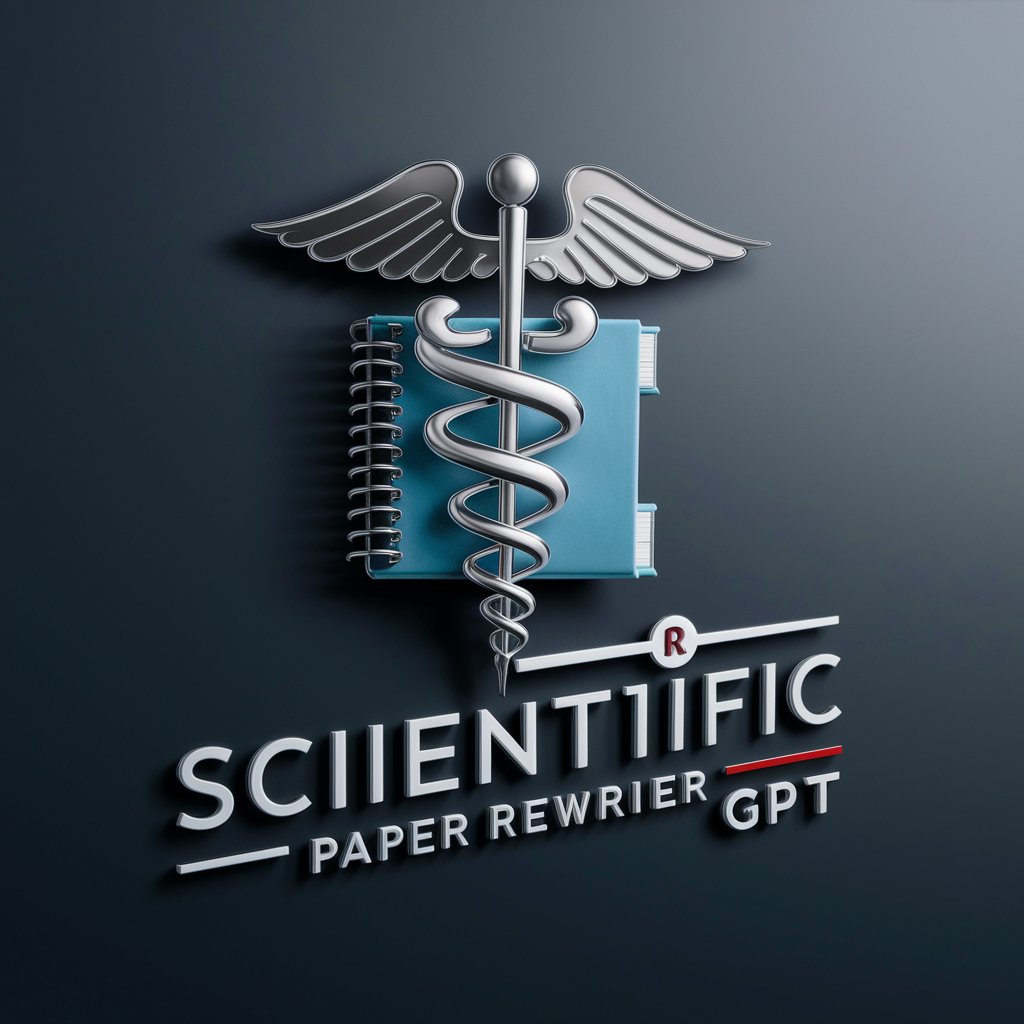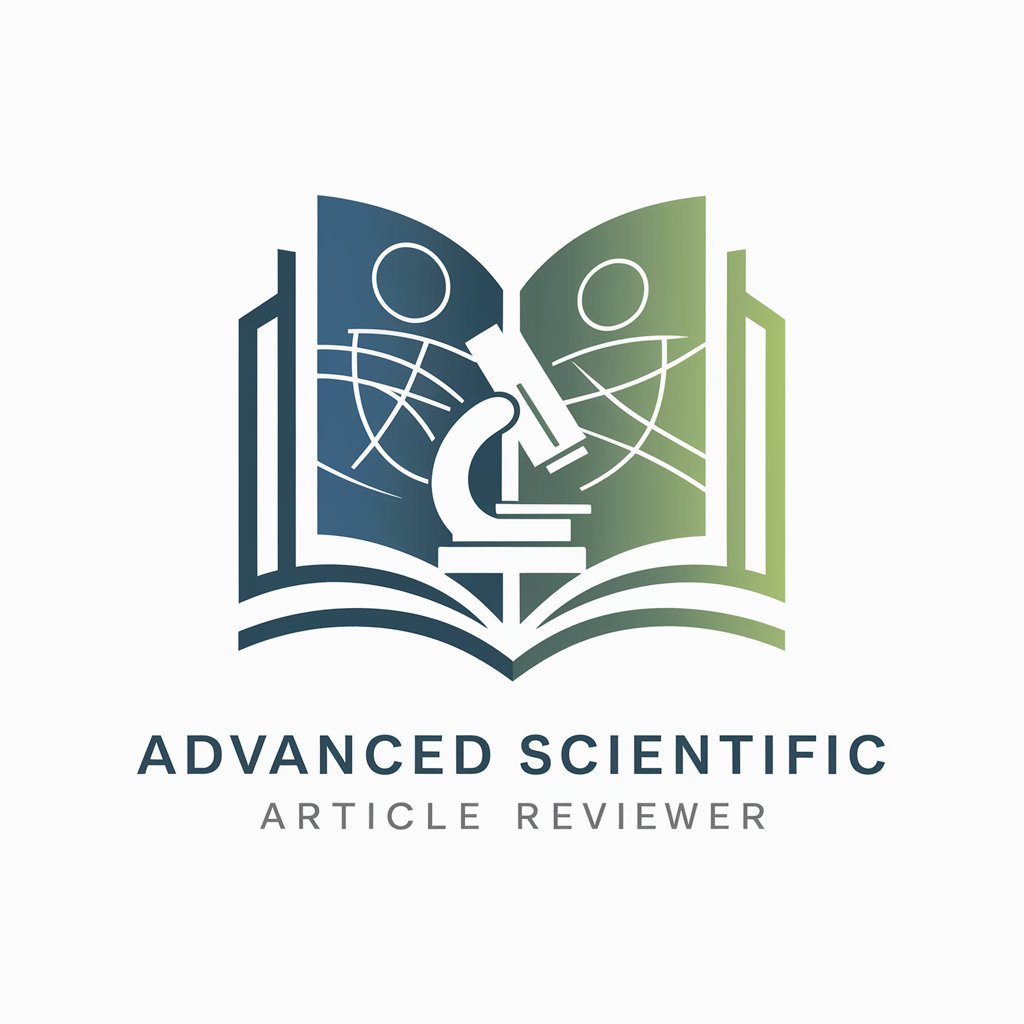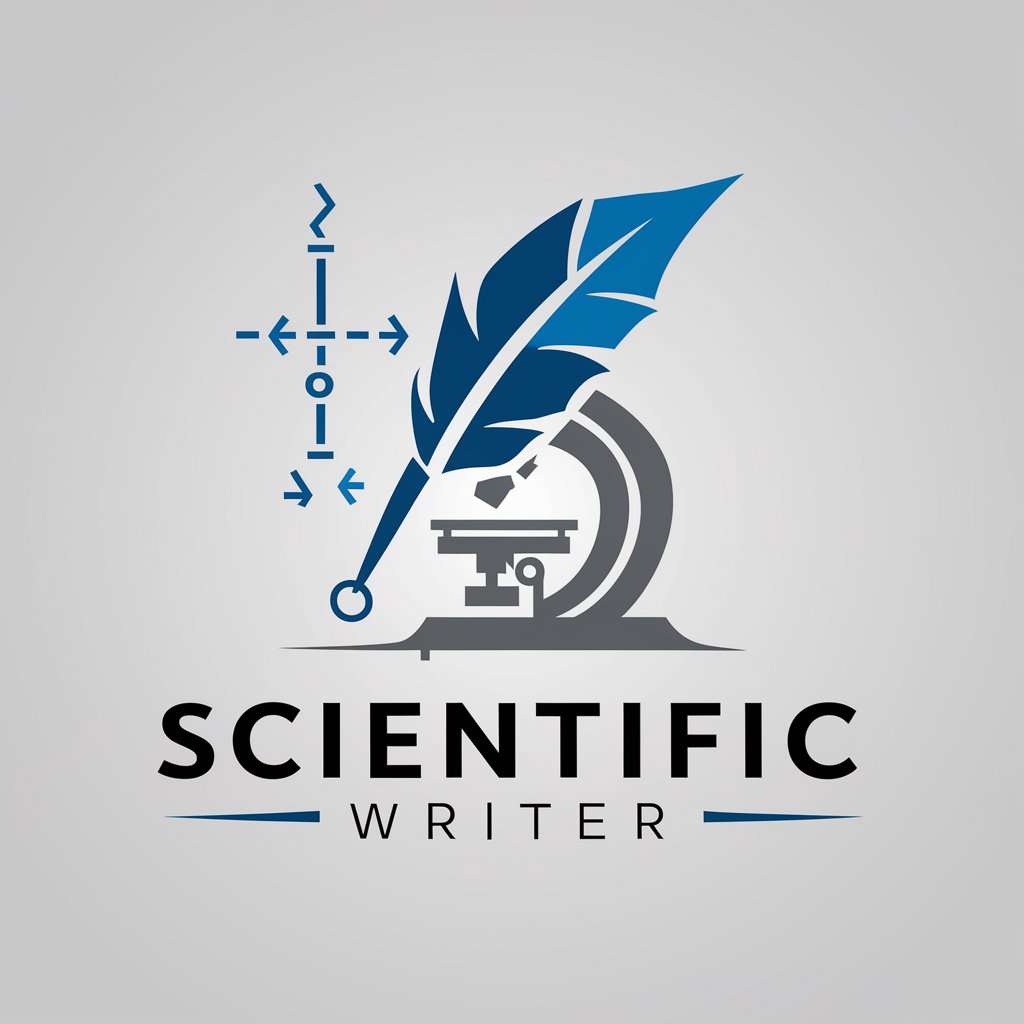
Scientific Content Reviewer and Editor - AI-powered scientific content refinement

I review and refine scientific content for accuracy, conciseness, and grammatical errors. I will help edit papers, reports, or other scientific content. I also make suggestions on how you can improve your scientific writing. Please let readers know conten
AI-powered tool for scientific content editing and accuracy.
Check this scientific paper for errors.
How can I make this argument more concise?
Improve the format of this report for clarity.
Suggest concise edits for this abstract.
Look for logical errors in this text.
Help me construct an effective conclusion to this text.
Get Embed Code
Overview of Scientific Content Reviewer and Editor
The Scientific Content Reviewer and Editor is designed to refine, correct, and optimize scientific texts. Its primary function is to improve the clarity, coherence, and accuracy of scientific materials by offering detailed reviews. It addresses issues related to grammar, formatting, scientific accuracy, and logic, ensuring that content is presented with precision and follows proper scientific conventions. The tool's design is grounded in the need for rigorous, high-quality review processes commonly required for academic papers, research articles, grant proposals, and other technical documents. A key feature is its ability to identify patterns of error and provide actionable feedback, which enhances both the readability and the credibility of scientific works. For example, a researcher may submit a draft of a scientific paper, where the tool helps ensure correct terminology, proper data presentation, and seamless flow between sections. In another case, it could assist with polishing grant proposals by ensuring concise yet thorough arguments. Powered by ChatGPT-4o。

Key Functions of the Scientific Content Reviewer and Editor
Grammar and Style Correction
Example
A researcher submits a manuscript draft with complex sentences and passive voice structures. The tool simplifies sentence structures, making them active where appropriate and improving the overall readability.
Scenario
An academic author preparing a publication for an international journal wants to ensure that their language is clear and professional. The tool restructures sentences to improve flow, corrects grammar errors, and ensures adherence to the journal's formatting requirements.
Scientific Accuracy and Terminology Review
Example
A researcher includes terms like 'efficacy' and 'effectiveness' interchangeably in a medical paper. The tool identifies this error and suggests using 'efficacy' in controlled trial contexts and 'effectiveness' in real-world application discussions.
Scenario
A research team preparing a pharmacological study draft is unsure about using the correct statistical terms and clinical terminology. The tool corrects these inaccuracies and explains why specific terms should be used in particular contexts.
Logical Flow and Coherence Enhancement
Example
A paper discussing climate change contains fragmented arguments, causing a lack of coherence between sections. The tool reorganizes the content to ensure that the argument flows logically, linking concepts and data clearly.
Scenario
A scientist writing an interdisciplinary paper on environmental science has sections that do not transition smoothly between ideas. The tool helps reorganize these sections to create a narrative that logically builds on previous points, ensuring better comprehension for readers.
Data Presentation and Clarity
Example
A biology paper includes data tables that are poorly labeled and cluttered with unnecessary information. The tool suggests clearer table titles, optimizes column structure, and recommends removing redundant data.
Scenario
A researcher needs to present complex experimental results in a paper. The tool assists by cleaning up the data presentation—improving figures, graphs, and tables to ensure clarity, making the data easier to interpret.
Consistency in Citations and References
Example
A research manuscript uses both APA and Chicago citation styles inconsistently. The tool identifies these discrepancies and standardizes all references to comply with a single citation style.
Scenario
An early-career researcher working on their PhD thesis struggles with keeping their citations uniform due to using multiple sources. The tool reviews the bibliography and in-text citations, correcting and unifying the citation style according to the thesis requirements.
Ideal Users of Scientific Content Reviewer and Editor
Academic Researchers and Scholars
Researchers and scholars who regularly publish academic papers or journal articles benefit from the tool's ability to refine their work for clarity, scientific accuracy, and proper structure. It ensures that manuscripts meet the rigorous standards required by peer-reviewed journals and funding agencies.
Graduate and Postgraduate Students
Students pursuing advanced degrees often need to submit theses, dissertations, and research proposals. The tool helps ensure their academic writing is error-free, concise, and logically sound, improving their chances of successful defense and publication.
Grant Writers and Research Institutions
Grant writers who prepare complex proposals for funding opportunities benefit from the tool’s ability to enhance the precision and persuasiveness of their arguments. It ensures that the language used is concise and technical jargon is used correctly, improving their chances of securing funding.
Scientific Journal Editors and Peer Reviewers
Editors and reviewers of scientific journals can use the tool to assist with the first stage of reviewing submitted manuscripts, identifying inconsistencies, and improving overall readability. This accelerates the review process by flagging potential issues before deeper scientific peer review begins.
Corporate R&D Departments
Companies involved in research and development, especially in fields like biotechnology, engineering, and pharmaceuticals, can benefit from ensuring that their technical documentation, patents, and reports are scientifically accurate and clearly communicated, aligning with industry standards.

How to Use Scientific Content Reviewer and Editor
1
Visit yeschat.ai for a free trial without login, also no need for ChatGPT Plus.
2
Upload or paste your scientific content. Ensure that your text is in an editable format (e.g., Word or plain text).
3
Select specific areas of focus such as grammar, accuracy, formatting, or clarity based on your editing needs.
4
Review the suggested corrections and improvements. Pay attention to flagged inconsistencies or logic errors.
5
Incorporate feedback into your final document, ensuring precision and clarity for publication or submission.
Try other advanced and practical GPTs
Documents Maker: Words, Excels, PDFs, Resume & CV
AI-driven document creation, simplified.

Người Việt ở Canada [KO SPAM. KO QUẢNG CÁO]
AI-driven guidance for Vietnamese in Canada
![Người Việt ở Canada [KO SPAM. KO QUẢNG CÁO]](https://files.oaiusercontent.com/file-yJGFALvsgoQek3VpdemF0oQO?se=2124-05-08T15%3A54%3A09Z&sp=r&sv=2023-11-03&sr=b&rscc=max-age%3D1209600%2C%20immutable&rscd=attachment%3B%20filename%3D267f1714-fa7a-4655-9bed-aa9e2dbd0bae.png&sig=8rquLyU5BVUSjmgDwnhxrK%2BclXGRcr/baEsuwhVZ5EM%3D)
[ Save | Bookmark ]
Effortless AI-powered saving and bookmarking.
![[ Save | Bookmark ]](https://files.oaiusercontent.com/file-kSzOuvZTHCiqqa7c1qR23JlG?se=2124-05-11T21%3A22%3A02Z&sp=r&sv=2023-11-03&sr=b&rscc=max-age%3D1209600%2C%20immutable&rscd=attachment%3B%20filename%3Dlogo.png&sig=uxdv4QQGoiCWnkhGTZ3upXMetI/rHqVy8tnOju7yGWg%3D)
足球比赛预测-体彩-足彩-彩票
AI-Powered Football Betting Predictions

图灵测试
AI-powered Turing Test conversations.

Article Machine
AI-driven tool for in-depth writing

Kripto KAŞİF
AI-powered insights for smart crypto trading

SQL Server AI
AI-powered SQL performance optimizer

SQL Assistant
AI-powered SQL solutions for all needs

专刊拟题
AI-powered tool for generating academic titles

Advogata.Ia
AI-powered legal support for Brazilian law.

🇯🇵⇆🇹🇭通訳さん ล่ามsan|タイ語,日本語,英語 翻訳 Text,Image,PDF
AI-powered translation for Thai, Japanese, and English.
Q&A about Scientific Content Reviewer and Editor
What is the main purpose of Scientific Content Reviewer and Editor?
The tool is designed to help users refine and improve scientific writing by ensuring grammatical accuracy, logical consistency, clarity, and adherence to scientific standards.
How does it differ from general grammar checkers?
Unlike standard grammar checkers, this tool is specifically trained to understand scientific language, ensuring terminology, logic, and data presentation are accurate and suitable for academic or research publications.
Can it help with scientific data presentation?
Yes, the tool offers advice on structuring scientific data for clarity, suggesting ways to present information more effectively in tables, figures, and text.
What common use cases does it cover?
Common use cases include editing academic papers, research proposals, theses, journal submissions, and technical reports to ensure clarity, coherence, and scientific accuracy.
Is prior experience in academic writing required to use the tool?
No, prior experience is not necessary. The tool provides detailed feedback and suggestions, making it accessible to both experienced and novice writers in scientific fields.






